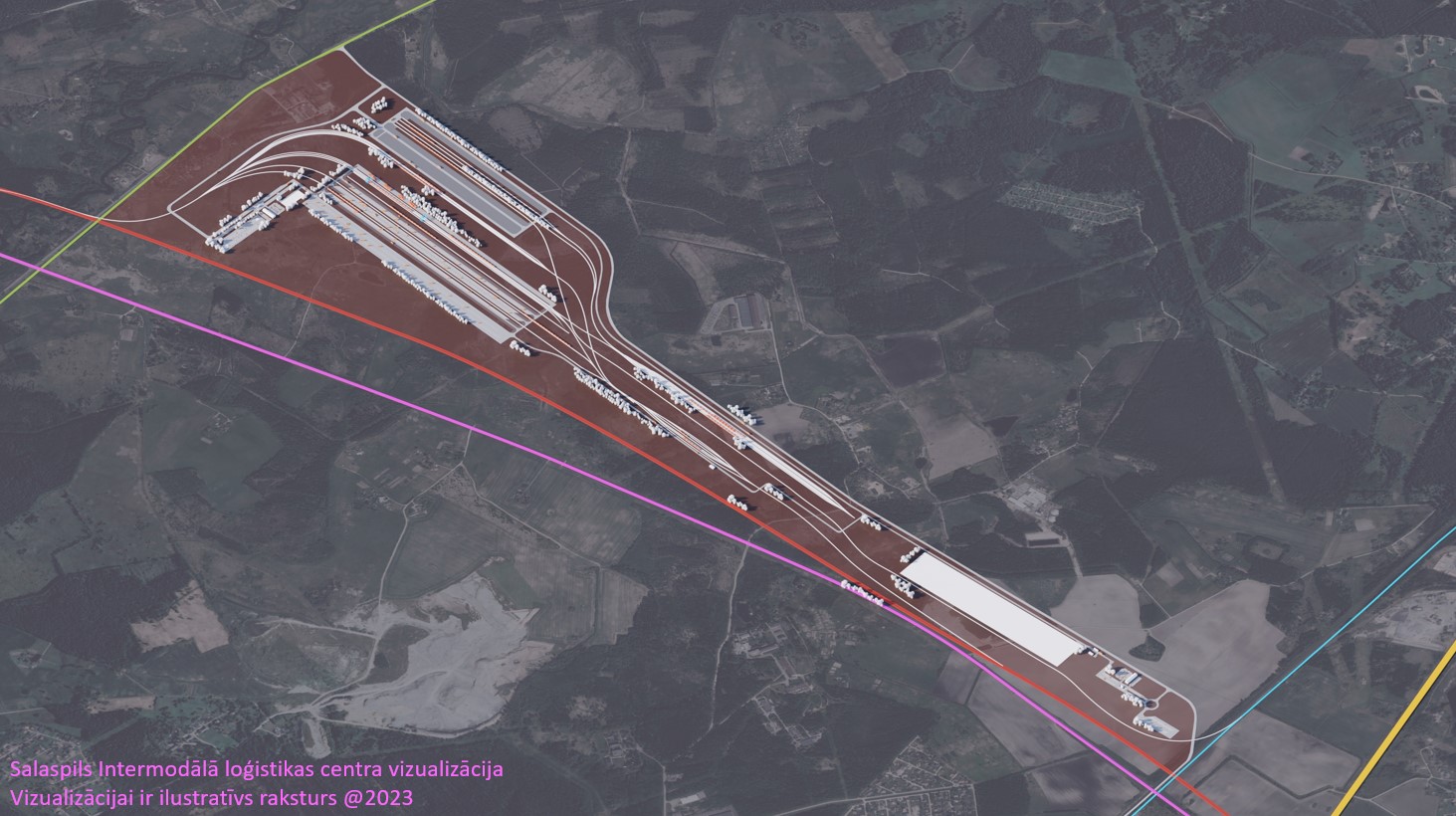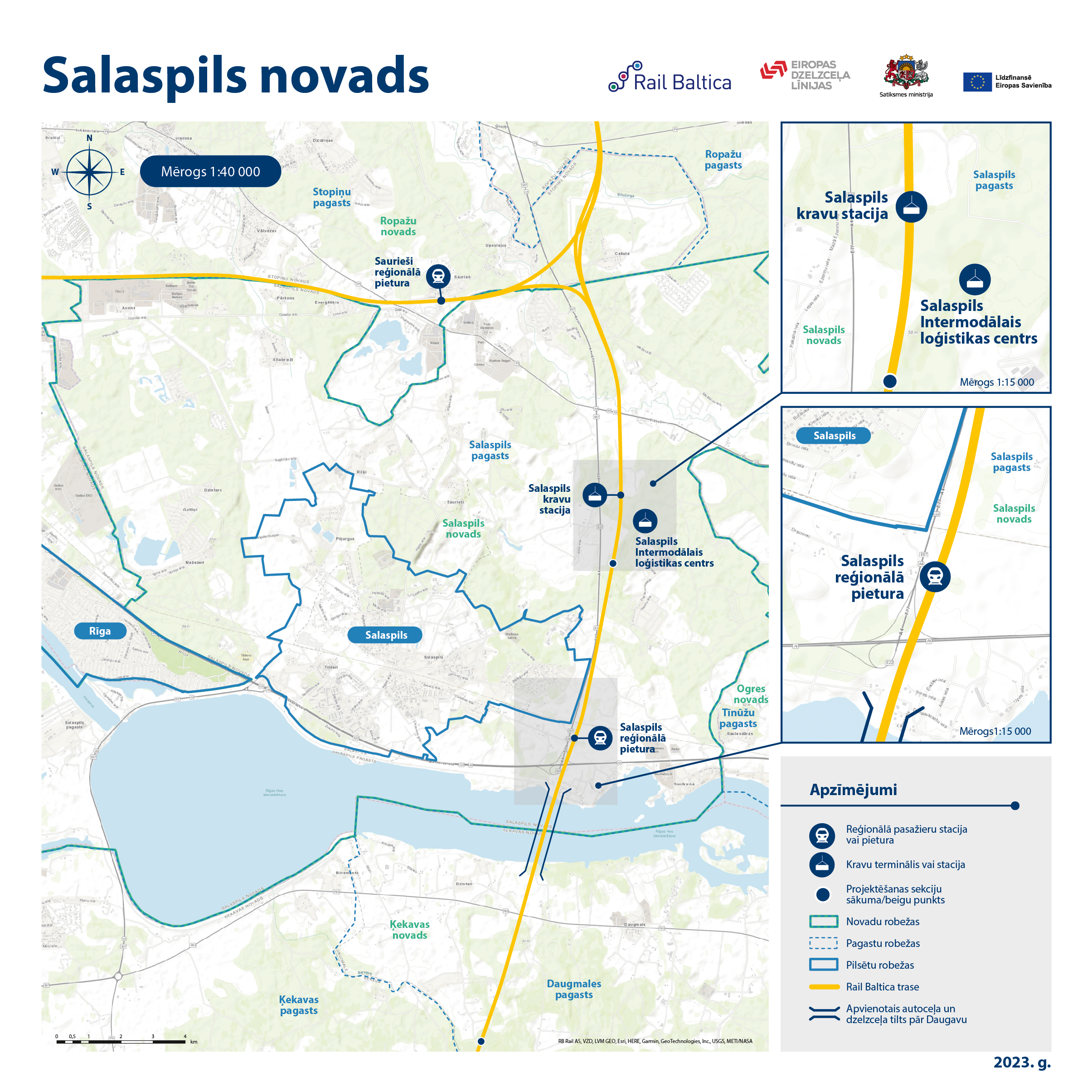All construction permits have been issued and the building design in minimum composition has been approved by the State Railway Technical Inspection for the future Salaspils Intermodal Logistics Center (SILC), which holds strategic and economic significance within the Rail Baltica project.
“To meet the functional requirements of the TEN-T core network, Rail Baltica plans to establish modern freight handling infrastructure alongside international and regional passenger services. This will facilitate convenient freight transshipment between various modes of transport, contributing to immediate revenue generation and economic development. Additionally, in light of current geopolitical conditions, ensuring Latvia’s and the Baltics’ connectivity with Western Europe and securing a swift flow of freight north-south is paramount,” explained Kaspars Vingris, the Chairman of the Board of Eiropas Dzelzceļa līnijas, the Rail Baltica national implementing body in Latvia.
SILC is envisioned as a significant freight handling point, catering to both rail and road freight. It will be located near Salaspils and will serve as the primary European standard gauge rail freight handling center in Latvia.

The location of SILC in the Salaspils municipality was chosen for its convenient connections to the existing 1520mm and new 1435mm standard gauge rail systems. It is also located at the crossroads of the state highways A6, A4, and P5. SILC will be situated just 15 minutes away from the Šķirotava station, which is the leading existing rail freight handling center in Latvia, and within an hour’s drive from the Riga Freeport, the largest container port in the Baltic States. Moreover, SILC benefits from the nearby railway stop “Saulkalne,” existing industrial and logistics centre developments in the area, as well as low, medium, and high voltage power transmission lines in the vicinity, gas infrastructure, and available territory in Salaspils and Ogre municipalities for further industrial and logistics facilities expansion.
SILC’s territory will accommodate containerized freight handling, short-term storage, transshipment between 1435mm and 1520mm gauge trains, as well as the handling of semi-trailers (piggy-back) and their further transport in specialized rail wagons. The necessary infrastructure for SILC includes railway infrastructure, including access roads and rolling stock handling yards, container handling and storage areas, semi-trailer handling zones, temporary parking for trucks, administrative and functional buildings for staff and clients, access control buildings for road connections, a special cargo handling area, water treatment facilities, and other necessary infrastructure for the full-fledged operation of the terminal. To promote business development and create jobs, there will also be opportunities for merchants within the SILC territory and its vicinity to develop their factories and warehouses.
According to current plans, the SILC territory within the Rail Baltica mainline will be approximately 7 km in length and may occupy an area of approximately 200 hectares. The optimization and detailed design of SILC solutions are currently underway, with completion scheduled for the end of 2024. The delineation of the external boundaries of this significant object will also be completed in the near future, and based on that, the real estate valuation and determination of market value and compensable losses for the construction of the freight terminal will begin.
The design work is being carried out by a consortium of Latvian and Italian companies, SIA BRD projekts and the Italian engineering firm Sintagma Srl, contracted by Eiropas Dzelzceļa līnijas. The contract with the designer also includes supervision until the terminal is handed over for operation.

